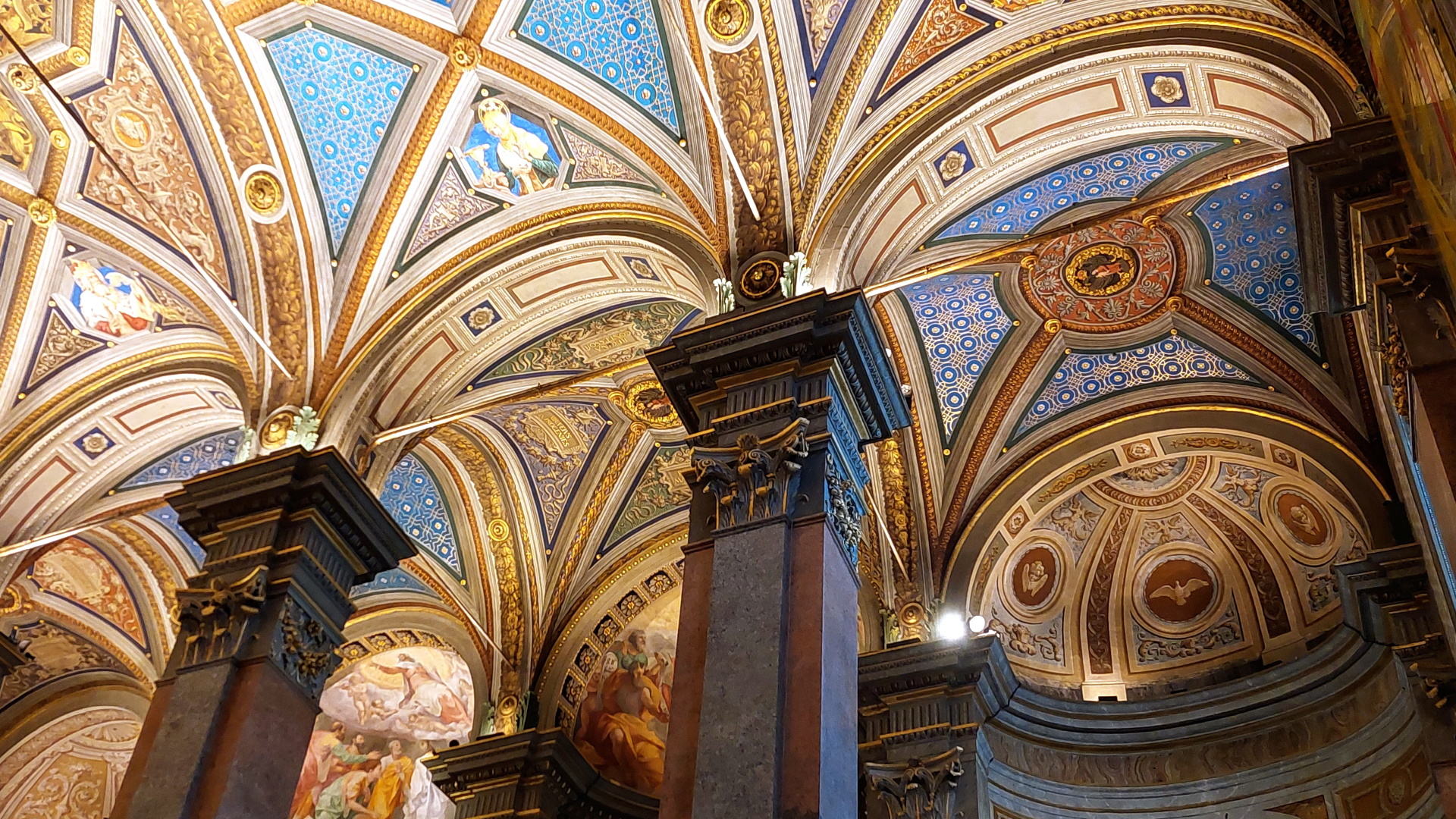
History and art, from the north to the south of Europe, meet in what has been the landmark church of the German catholic community in Rome for more than 600 years. The remote origins of the church date back to 1350, when a married couple from Dordrecht (today in the Netherlands), visiting Rome for the Holy Year, donated some houses they owned to become an oratory and hospice designed to welcome German, Flemish and Dutch pilgrims and poor, with the stipulation that the abbot be German-speaking.
The 14th-century oratory was renovated and enlarged a first time in the 15th century, but after a short time, on the occasion of another holy year, that of 1500, it was decided to rebuild it in decidedly more imposing forms, thanks in part to the financial contribution of Johannes Burckard, the influential master of ceremonies of Pope Alexander VI Borgia. Seriously damaged in the 1527 Sack of Rome, the church knew perhaps its most difficult moment after the French invasion of 1798, when it was desecrated and turned into a barn and cavalry barracks: only with Pius IX was it returned to worship and to its primitive purpose.
The tall brick façade, attributed to Giuliano da Sangallo and built between 1514 and 1523, shows a rigorous Renaissance style. Sturdy cornices divide it into three horizontal storey, the last of which is embellished by a large round window flanked by the coats of arms of Adrian VI, who is buried in the church. By Andrea Sansovino is the sculptural group in the tympanum of the central portal: it depicts the Madonna and Child Jesus between two kneeling figures and is perhaps a reproduction of an ancient fresco found at the end of the 15th century with Our Lady flanked by two souls in Purgatory, a detail from which the church derived its name. Visible only from Vicolo della Pace is the elegant and original brick bell tower, probably designed by Andrea Sansovino, with Renaissance mullioned windows, Gothic-style pinnacles and a spire covered in polychrome tilework.
The sober balance of the exterior is contrasted by the richness and solemnity of the interior, with nave piers standing on very tall bases. The aisles are flanked by chapels rising up to the vault, following the architectural model of the “Hallenkirchen”, or hall churches, the typical style of late Gothic Germanic churches. The eight chapels contain a roundup of masterpieces: among others, Francesco Salviati’s frescoes for the Chapel of the Margraves of Brandenburg, commissioned by Cardinal Johann Albrecht of Brandenburg, archbishop of Magdeburg and a great opponent of Luther; the “Miracles of St. Bennone” by Carlo Saraceni, a much celebrated painter in the first half of the 17th century and one of the earliest and most important interpreters of Caravaggio; a “Pietà” by Lorenzetto finished by Nanni di Baccio Bigio; the “Stories of the Virgin” frescoed by Girolamo Siciolante da Sermoneta.
But it is the high altar that holds perhaps the two most famous works in the entire church. The altarpiece depicts “The Holy Family and Saints” by Giulio Romano, Raphael’s most talented pupil. It is considered one of his best works and was commissioned by Jakob Fugger – the first modern businessman and financier of Charles V’s imperial election – for the family chapel, but it was moved to the high altar in the late 17th century to spare it further damage as a result of the Tiber floods. On the right side, the funeral monument designed by Baldassarre Peruzzi contains the remains of Pope Adrian VI, born Adriaan Florensz, a native of Utrecht who died in 1523 after only 13 months as pope.
A pontiff with an austere style, devoid of any form of nepotism and with little love for classical art, Adrian VI was not enthusiastically received by the Romans. Buried initially in St. Peter’s basilica, between pontiffs Pius II and Pius III, he was thus greeted with a pasquinade that has gone down in history: “Hic jacet impius inter Pios”, or “Here lies an unpious among the Pious”. It was perhaps that sardonic epitaph that convinced Cardinal Wilhelm van Enkenvoirt, a friend of the pontiff and himself buried in the church, to move his remains here. Framed by the four cardinal virtues, the reclining figure of the pope occupies the center of the monument; at the bottom, a relief shows Adrian VI’s entry into Rome, represented by the statue of the Tiber with the cornucopia, the she-wolf with Romulus, and some characteristic buildings.
Navona Square
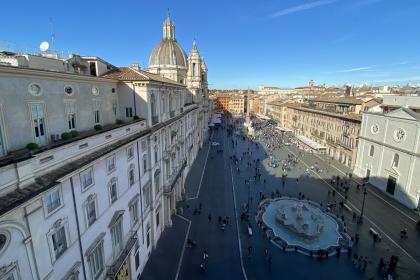
 Condividi
Condividi
The most iconic square of Baroque Rome
The Church of Santa Maria della Pace
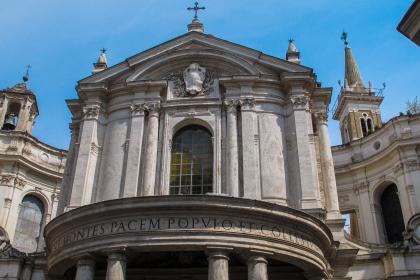
 Condividi
Condividi
Church of San Giuliano dei Fiamminghi
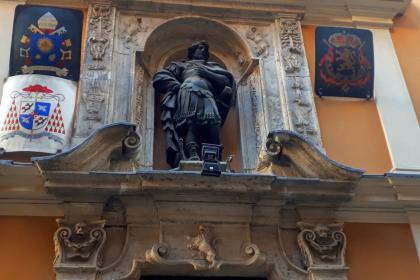
 Condividi
Condividi
Flood plaques
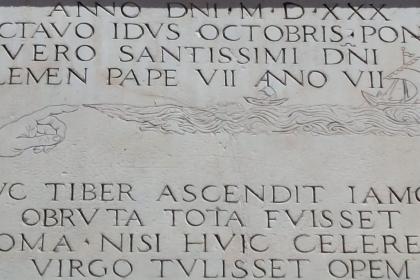
Information
For the timetable of the masses and visiting conditions, please consult the contacts.
 Condividi
Condividi
Location
To find out about all accessibility services, visit the Rome accessible section.











































